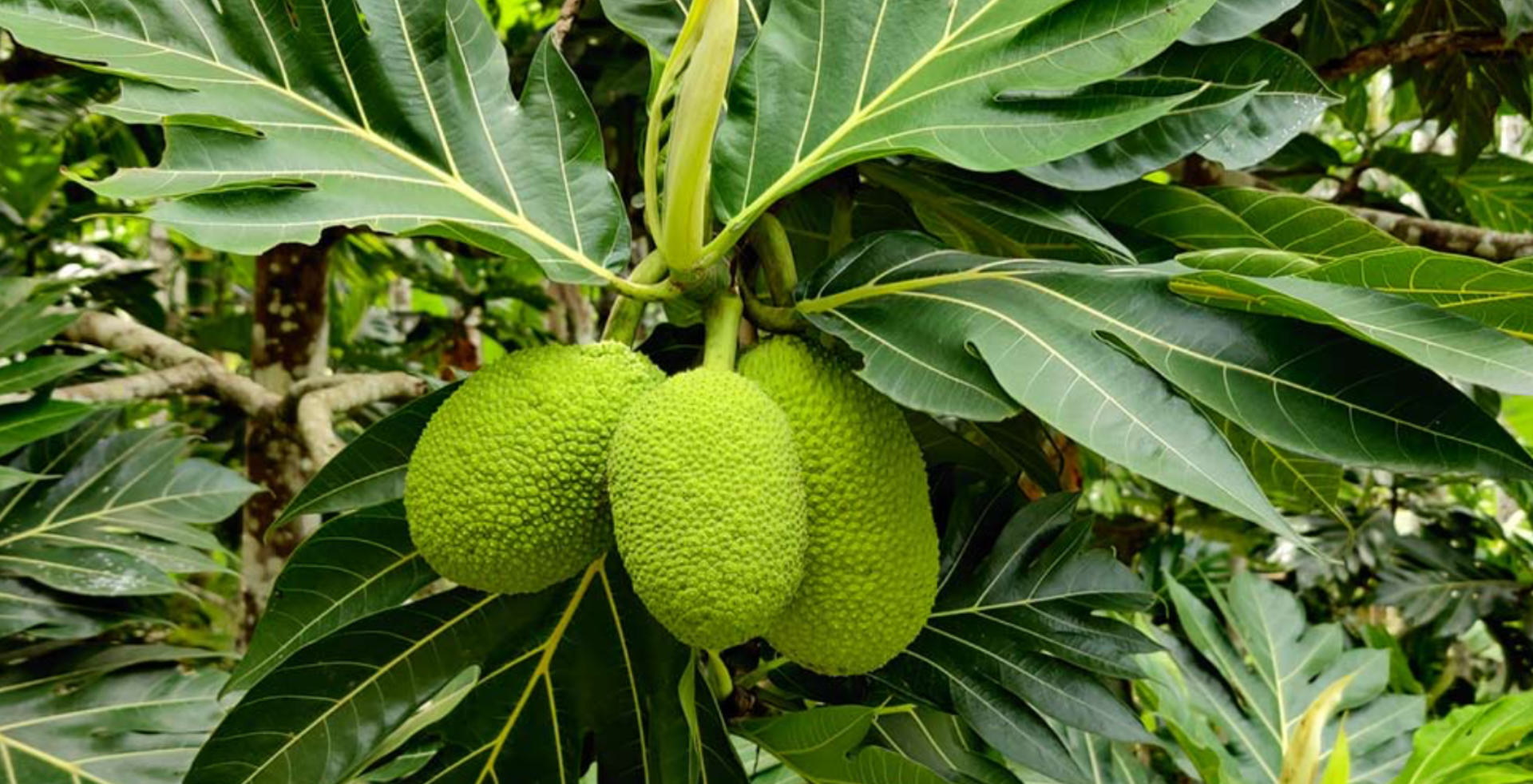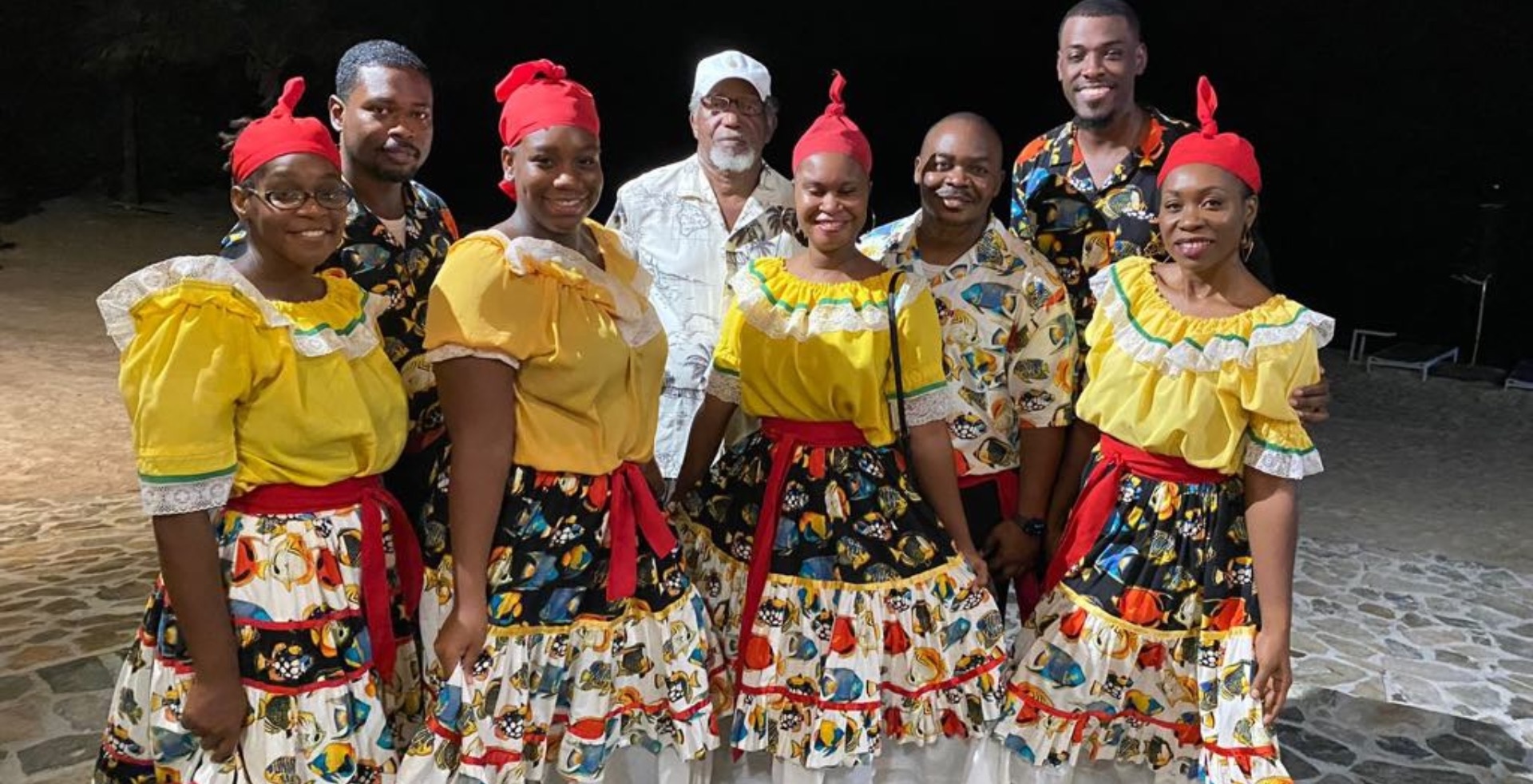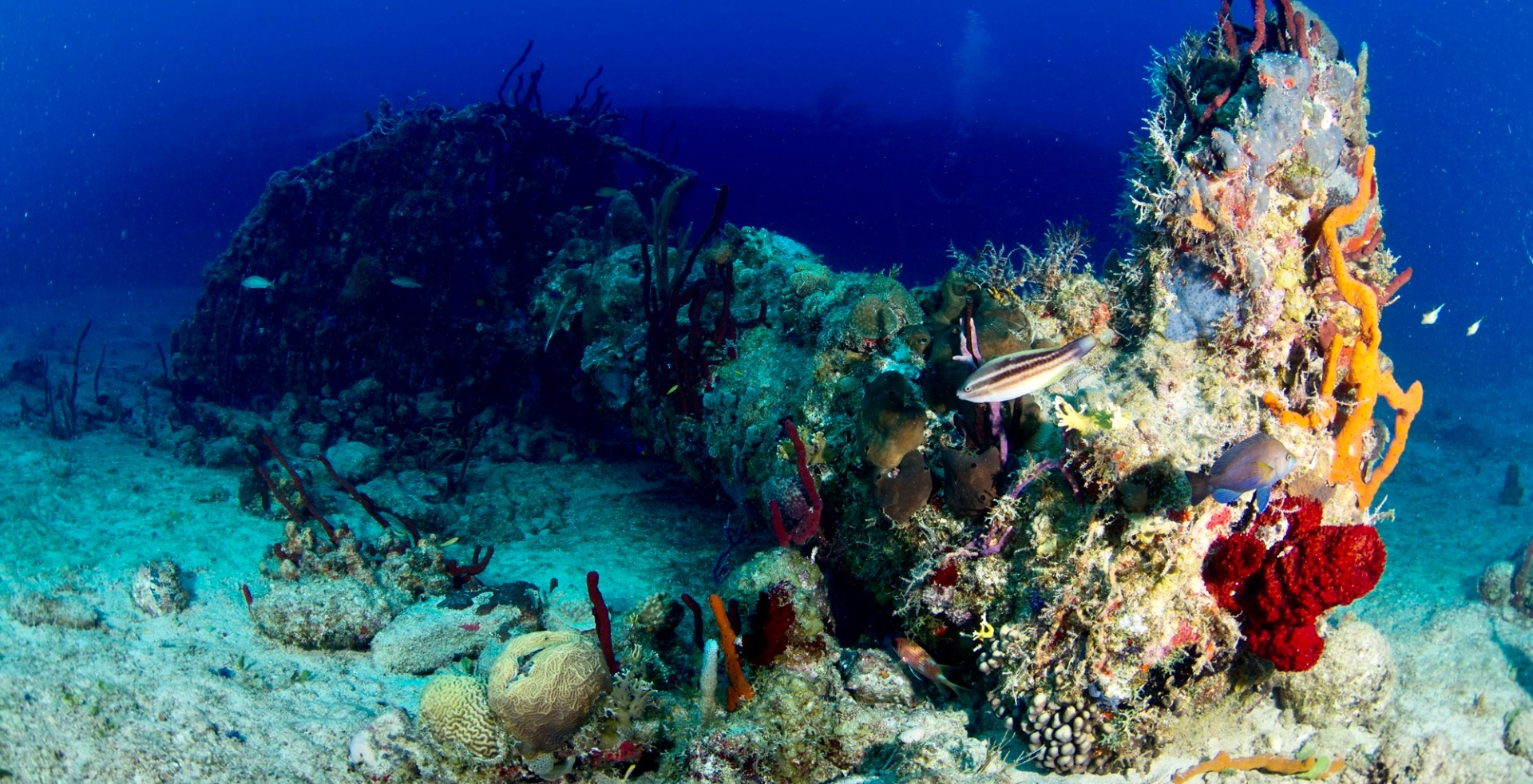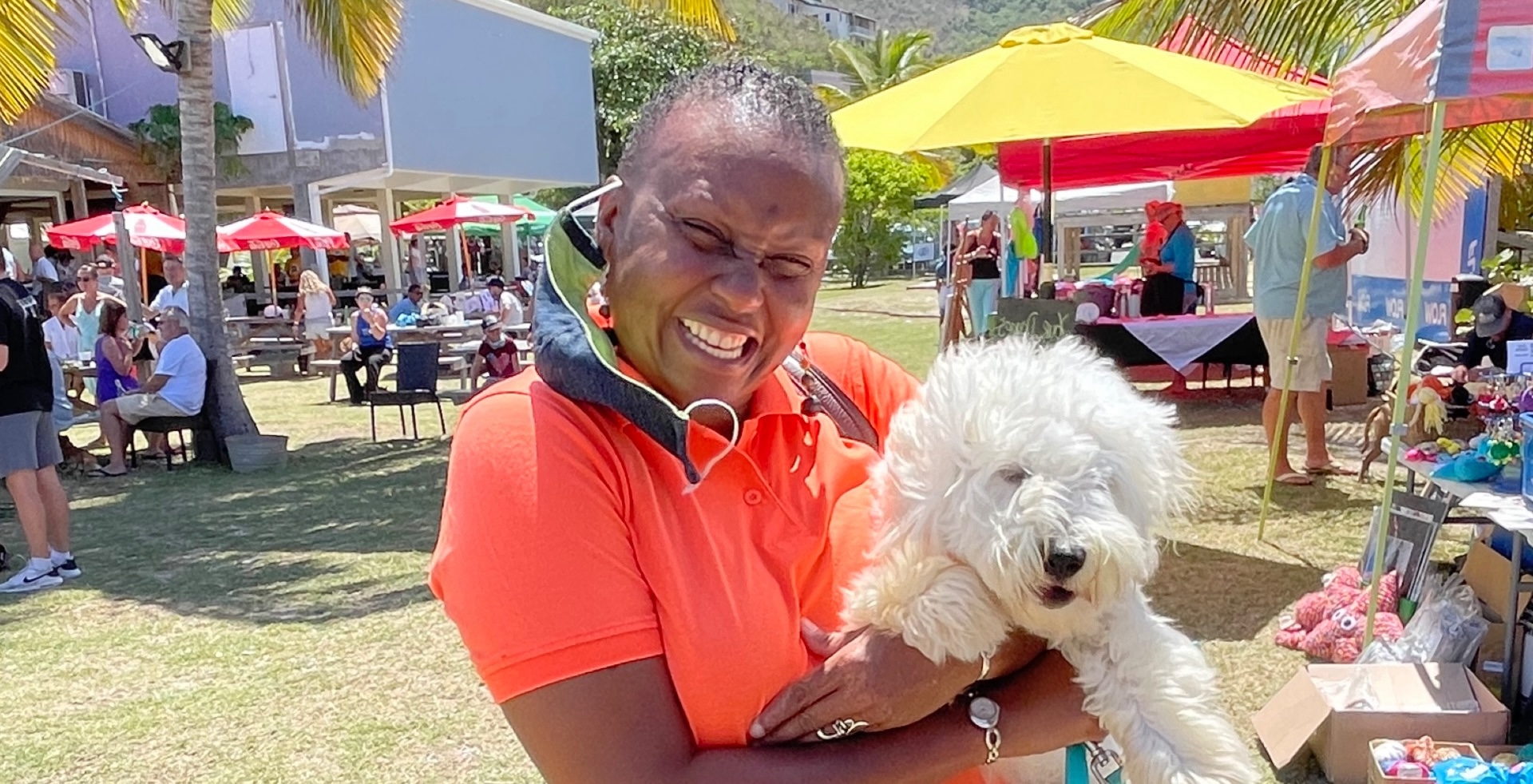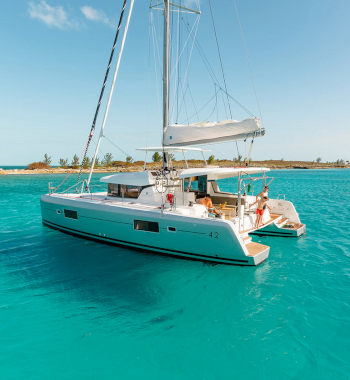The BVI’s Found Art
Story and Photos by Nancy Read
I have always been a collector, one of those people you see searching intently while walking on the BVI’s beautiful beaches, occasionally reaching down to pick something up. Certain items found are worth the effort of bending over for, but not all. Sometimes, I pick something up, only to cast it aside, feeling sorry for its rejection.
Sometimes, I think, “You don’t have to be perfect to be beautiful,” and I put it in my other hand to keep.
Shells with holes have always been especially attractive to me. Maybe, it’s knowing I can put a string through the hole to make a necklace, and maybe it’s the wonder of who made the hole. As an elementary school science teacher, a favorite question to ask young students is, “Who made the shell?” I get the darndest answers, from God, to the ocean. When I consider that a creature once lived inside and made the shell, (either a one-shelled univalve, or a two-shelled, bivalve), and that another creature, with a sword like radula, cut the hole, ate the animal, and then left the perfect hole for me… the story is magical, but true!
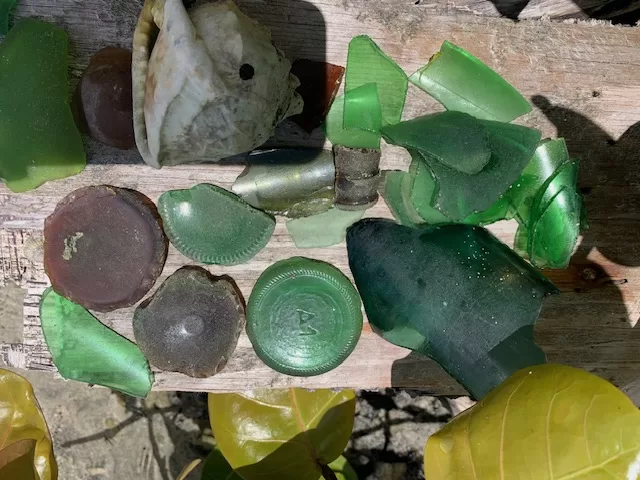
The only man-made article I like finding on the beach is sea glass. When it has that frosted look and rounded edges, it is truly ready for collection. Otherwise, I throw it back for the future. It needs more time. Mostly browns, greens, whites, and occasional blues, are found in the BVI. I assume this is evidence of years of beer drinking. It saddens me that businesses now create and sell colored sea glass, where it has been artificially tumbled, made to look like real sea glass. I like finding the real thing!
This past holiday season I was on my sailboat docked at Soper’s Hole on Tortola’s West End and pulled out all of my sea glass. I arranged the pieces to decorate my Christmas tree, beautiful and sparkling.
One time, just last month, I was exploring a small beach on the coastal road to West End across from the laundromat, waiting for clothes to finish washing. I discovered four bottle bottoms, the circular part of the bottle that doesn’t usually break. I set them aside, with the intention of making a wind chime… hang each one from a piece of fishing line so it gently clinks, catching the sunlight and the breeze. (Photo 2).
Another fun find that makes a sound are the seed pods of the royal Poinciana tree, also known as a flame tree. When they fall from the tree, they can be shaken like a maraca as the seeds have dried inside. I have one which I purchased at Nelson‘s Dockyard, Antigua, in 1982. It is still solid, bug free and still reads in colorful paint, “For Fun in the Sun Visit Antigua.” (Photo 3). Not sure what I paid for it years ago, but I know Etsy sells one pod, unpainted, for $16.77! On my walk from Soper’s Hole to Smuggler’s Cove, I pass a couple of flame trees. I’m always on the lookout to pick up the pods before they get smashed on the road.
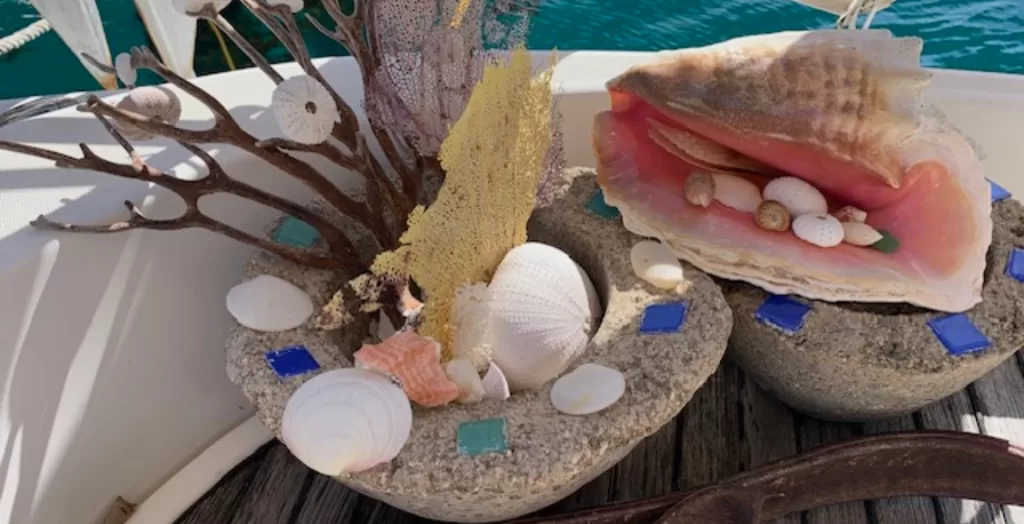
Each one has a different shape and length, lending it to be easily painted with letters and designs. I always have a stash of 10 or so on the boat, much to my daughter’s chagrin.
Another collection on my boat, which has gotten out of hand, but which I have a hard time resisting, includes those pinkish purplish sea fans we find on our beaches, often complete with the “holdfast,” that root-like structure on the bottom of the fan. Collected, and often seen displayed in front of homes and hotels, it’s amazing how resilient they are, often arriving undamaged to our beaches.
Then I started finding washed up on the shore, dark brown, wispy looking mini tree-like structures, which I somewhat identified as black sea fan coral skeletons. (Photo 4). They are uniquely shaped, as though to illustrate the current they’ve lived through.
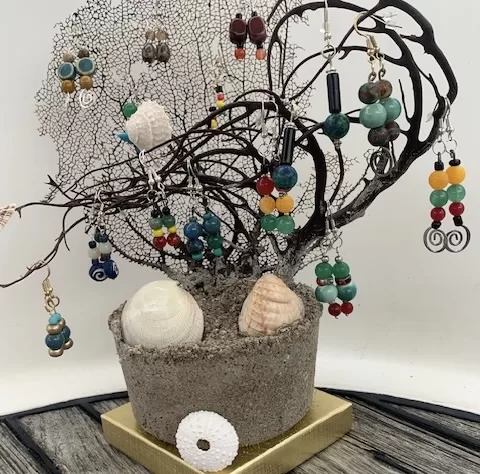
I decided to take these discards of nature and create something new and different. I had an event in Florida, where I live when I’m not on Tortola, and used the sea skeletons to hang beads and shells on with strings for table decorations. (Photo 5). However, now preferring a more natural look, and in order to appreciate the wonder and beauty of these found items, I decided to try using hypertufa and I turned my boat’s cockpit into a workshop one morning last month.
Hypertufa translates to “strong rock,” and so far, my experience has proved that to be correct. The product seems to be extremely long lasting, and yet surprisingly lightweight. It is a mixture, and a messy one at that, of a quick dry cement, pearlite/vermiculite, peatmoss/coconut coir and water. Coating any plastic bowl with a vegetable spray allows for easy release, and by pressing another smaller bowl inside the first bowl, a perfect planter is produced for succulents and other small plants. I have also used them to display my treasures on the boat for passers-by to see and enjoy. (Photo 6).
Putting both ideas together, I had the thought to make seascapes. I took some of those white sea urchin eggshells, and the unusual cornucopia shaped cases made of sand I have found. Hanging these and other shells on the wispy dark coral branches, I was able to display these fragile items safely. Then by filling in the molds with hypertufa, and pushing in sea fans, coral skeletons and shells, I can create very pretty, long-lasting, totally natural displays, or decorations for indoor or outdoor enjoyment. They are lightweight, and can be functional… I can hang many pair of earrings on my displays! It’s perfect for that! (Photo 7).
And now, back to those bottle bottoms I left at the beach last month. I wonder if they’ll still be there when I go back. The BVI and its natural bounty is calling.

